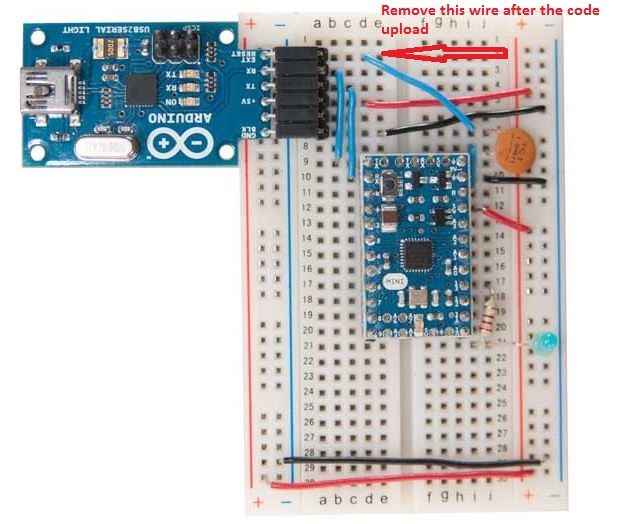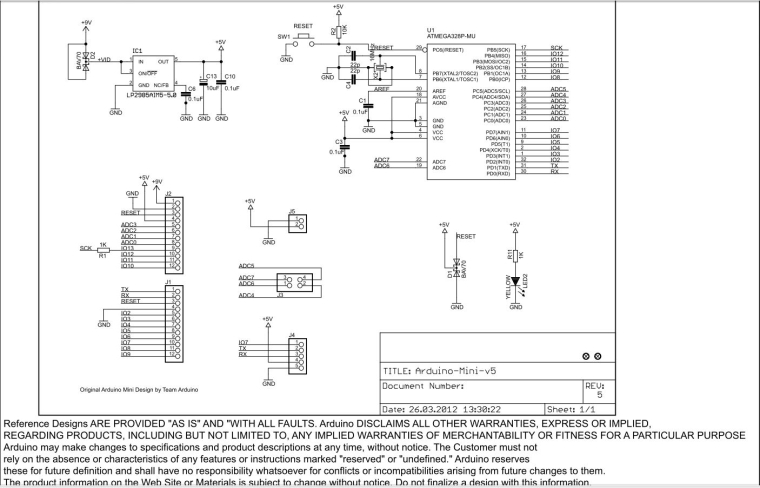Sensor "persistence"?
-
The node is an Arduino Mini - it is not an Arduino Mini Pro as reccomended, true!
But I'll try soon with an Arduino Nano as a node.
The gateway is an Arduino nano.
on The gateway side the serial monitor only shows0;255;3;0;14;Gateway startup complete. 0;255;0;0;18;2.1.1no matter how many times I power ON and OFF the sensor.
But after I reflash the sensor then the Gateway serial output is:0;255;3;0;14;Gateway startup complete. 0;255;0;0;18;2.1.1 2;255;3;0;11;Thermistor 2;255;3;0;12;1.0 2;0;0;0;6; 2;0;1;0;0;27``` -
Just a thought..
Program a simple blinking sketch in your node, see if the LED is blinking (this is without mysensors at all!)
Now try powercycling it a couple of times, does it start blinking?
If not, then there is a problem with your arduino mini.
-
Amazing! You were absolutely right! I tried a simple LED blink like below, it only works once after the code upload. No matter how many times I power cycle after that, it will not work any more. What could be wrong with this Arduino Mini? It is the original Arduino Mini from Farnell ...
/* Blink Turns on an LED on for one second, then off for one second, repeatedly. Most Arduinos have an on-board LED you can control. On the UNO, MEGA and ZERO it is attached to digital pin 13, on MKR1000 on pin 6. LED_BUILTIN is set to the correct LED pin independent of which board is used. If you want to know what pin the on-board LED is connected to on your Arduino model, check the Technical Specs of your board at https://www.arduino.cc/en/Main/Products This example code is in the public domain. modified 8 May 2014 by Scott Fitzgerald modified 2 Sep 2016 by Arturo Guadalupi modified 8 Sep 2016 by Colby Newman */ // the setup function runs once when you press reset or power the board void setup() { // initialize digital pin LED_BUILTIN as an output. pinMode(8, OUTPUT); } // the loop function runs over and over again forever void loop() { digitalWrite(8, HIGH); // turn the LED on (HIGH is the voltage level) delay(1000); // wait for a second digitalWrite(8, LOW); // turn the LED off by making the voltage LOW delay(1000); // wait for a second }``` -
Forgot to tell I have a few such Arduino Mini, all have the same issue!
Might have something to do with both the way I have connected the power and the reset, like here, "Connecting the Arduino Mini and Mini USB Adapter":https://www.arduino.cc/en/Guide/ArduinoMini
Power to the Arduino (+5V) comes from the USB Adapter while reset goes through a capacitor.
I will abandon this setup and use a nano based sensor for now. -
Yes, I did, no change.
I have removed the capacitor on the RESET pin and I have pressed the RESET button on the Mini, nothing happens to my surprise.
I shall try to use a different 5V power supply instead of supplying the Mini from the USB adapter. Eventually remove every wire between the Mini and the USB adapter and use an external 5V supply. -
I have re-wired everything and it works now if I remove the wire from the USB Adapter "EXT. RESET" signal to the 100nF capacitor connected to the Arduino RESET pin - after the code upload.
I guess we can say "solved", I still can use the Arduino Mini if I remove either the RESET capacitor or the wire to this capacitor, like in the attached picture ... nice help on this forum anyway:-)
-
I have re-wired everything and it works now if I remove the wire from the USB Adapter "EXT. RESET" signal to the 100nF capacitor connected to the Arduino RESET pin - after the code upload.
I guess we can say "solved", I still can use the Arduino Mini if I remove either the RESET capacitor or the wire to this capacitor, like in the attached picture ... nice help on this forum anyway:-)

